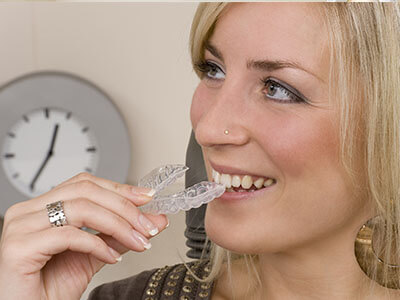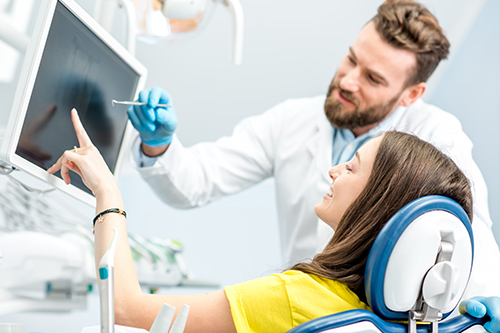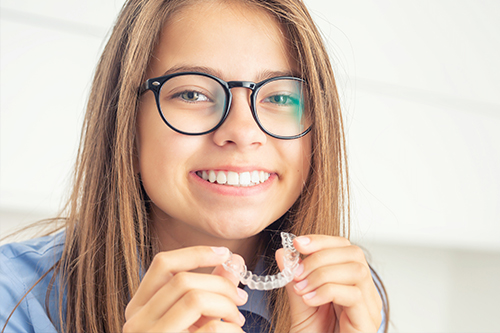Invisalign® offers a modern, low‑profile approach to orthodontic care that fits into busy lives. Using a sequence of clear, removable aligners crafted from advanced materials, this system gently guides teeth into healthier, more balanced positions without brackets or wires getting in the way. For many patients, the appeal lies in predictable results delivered with discretion and comfort.
A clear solution that adapts to your day-to-day life
Unlike traditional braces, clear aligners are designed to be worn throughout the day but removed for eating and routine oral hygiene. That removable design means you can maintain your regular diet and cleaning routine while still making steady progress toward a straighter smile. Most patients find the transition to aligners straightforward, with only a short adjustment period at the outset.
Because aligners are nearly transparent, they offer cosmetic advantages for people who prefer a subtler look during treatment. The minimal visual impact makes them popular among adults and older teens who want to keep their professional or social presence unchanged while undergoing orthodontic care. That discreet profile often improves treatment adherence because patients feel confident wearing their aligners around others.
Comfort is another important benefit. Aligners are fabricated from smooth, medical-grade thermoplastic and are custom trimmed to your gumline for a snug, unobtrusive fit. When follow-up visits are scheduled, your clinician checks fit and progress, making small refinements to keep the plan on track. The cumulative effect is steady movement with less soreness than many people expect.
Watch an overview of how digital planning and custom aligners combine to create a personalized treatment path.
How digital planning shapes predictable progress
Modern aligner therapy relies on high-resolution 3‑D imaging and sophisticated software to visualize each stage of tooth movement before the first aligner is produced. Scans capture the current alignment, and a digital plan models incremental shifts that will occur over the course of treatment. This virtual roadmap helps clinicians anticipate complex movements and present a clear sequence of aligners shaped to reach the desired outcome.
The ability to preview the treatment path gives both clinician and patient an informed perspective on timing and expected results. During the planning phase, small refinements are often possible to better align esthetic goals and functional needs, such as bite correction or space closure. These adjustments are made in collaboration with your dental team to ensure the plan reflects your priorities.
Because the entire series of aligners is fabricated to follow the digital plan, each tray plays a specific role in advancing teeth toward their targets. This level of coordination allows for controlled force application and minimizes unnecessary movement. Periodic clinical evaluations ensure the plan remains accurate and allow your provider to make changes if the treatment response differs from expectations.
What to expect during your treatment journey
Your Invisalign® experience begins with a comprehensive consultation that includes an oral exam and a digital scan. The scan is quick and precise, replacing traditional impressions in most cases, and produces the data needed to build your treatment plan. From that point forward, your care follows a clear rhythm: wear the prescribed aligner, swap to the next in the series as directed, and attend scheduled check-ins to confirm progress.
Typical follow-ups are focused and efficient—your clinician assesses fit, checks movement, and provides the next set of aligners when appropriate. Because aligners are changed at home on a regular cadence, many patients appreciate the reduced frequency and duration of in-office visits compared with some other orthodontic approaches. If attachments or refinements are needed, your provider will explain the purpose and integrate those steps into the plan.
Throughout treatment, the clinical team monitors not only alignment but also bite relationships and overall oral health. If additional restorative or cosmetic work is part of your long-term plan, aligner therapy can often be coordinated with those treatments to support an optimal final result. Clear communication and scheduled assessments keep the experience predictable and focused on achieving your smile goals.
Practical care: keeping your aligners and teeth healthy
Because aligners are removable, maintaining oral hygiene during treatment is straightforward but essential. Brush and floss after meals before reinserting your trays to prevent staining and to avoid trapping food particles against tooth surfaces. Rinsing aligners with cool water and gently brushing them with a soft brush (without toothpaste) helps remove debris and keeps them clear.
Avoid exposing aligners to hot water or leaving them in direct sunlight, as heat can warp the plastic and affect fit. When you remove your aligners for eating, store them in their case rather than wrapping them in napkins or leaving them exposed. These simple habits protect the aligners and reduce the chance of misplacement.
Regular preventive visits with your dental team continue through aligner treatment. These visits support gum and tooth health and ensure that any emerging issues—such as sensitivity or enamel concerns—are addressed promptly. Working together with your clinician preserves the health of your mouth while you pursue alignment improvements.
Initial consultation and comprehensive exam
Your first visit sets the stage for sensible treatment planning. During this appointment, the clinician evaluates tooth alignment, bite relationships, and overall oral health to confirm that aligner therapy is an appropriate option. This exam also allows you to discuss esthetic priorities and functional concerns so the plan reflects real goals.
Digital scanning and a clear treatment preview
A quick, comfortable digital scan captures the information needed to build a step-by-step treatment simulation. That preview shows the projected changes over time and helps you and your clinician refine desired outcomes. Seeing a visual plan can be reassuring and makes the process more transparent from the start.
Custom manufacturing focused on fit and function
Each aligner in the series is manufactured to match the precise movements planned in the digital sequence. The result is a set of trays that work together to apply gentle, targeted force where it’s needed. Quality control during fabrication helps ensure comfortable fit and consistent performance across the treatment timeline.
Ongoing care and finishing touches
From the initial delivery of aligners through the final refinements, your clinician remains involved to confirm progress and address fine details. After the primary series, retention strategies are often discussed to protect long-term results. The goal is a stable, comfortable smile that supports both health and confidence.
Educational videos about the treatment process
Browse clinician-focused videos that explain key aspects of aligner therapy and what to expect during treatment.
*Invisalign® is a registered trademark of Align Technology, Inc.
At the office of Dr. Anthony Iuvone, DMD, we pair careful clinical oversight with modern aligner technology to help patients pursue straighter, healthier smiles. If you’re curious whether clear aligner therapy is a good fit for your needs, contact us for more information and to arrange a consultation with our team.







